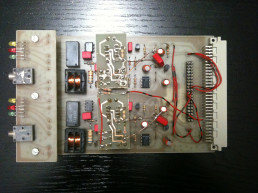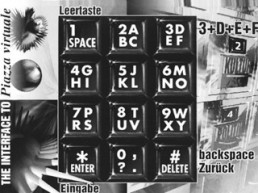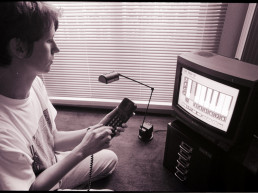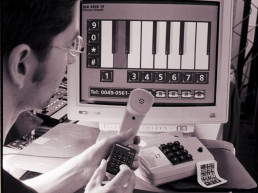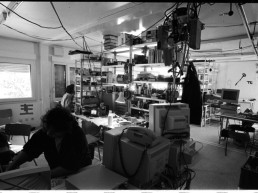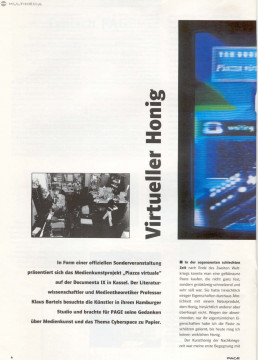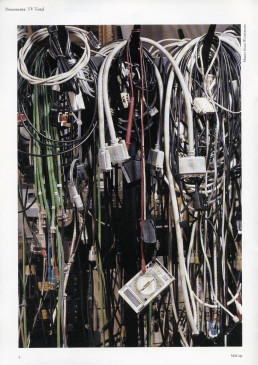Technology
The Van Gogh TV staff developed a number of highly specialized devices and technologies for “Piazza virtuale”, but also for the group’s other projects. For “Piazza virtuale”, the control of programme elements via telephones using the multi-frequency method was certainly the most important innovation. This made it possible, for example, to trigger samples in the programmes “Interactive Orchestra” and “Rap ’em Higher” and thus make music together or to paint together in the “Atelier”. For the programme “Medialandscape”, Salvatore Vanasco developed a computer programme for natural language processing together with a programmer.
The previous project “Hotel Pompino” was already technically extraordinarily innovative and was broadcast from one of the first virtual studios in Europe, developed by the technicians of Van Gogh TV. Another innovation was the integration of a chat in programme segments like “Coffeehouse”, which had also been used in “Hotel Pompino” and in its predecessor project “RePublic TV”.
The broadcasting of programmes from the Piazzettas in other cities using the slow-scan TV method and via ISDN were also methods that were not used in traditional television. In order to allow people in Kassel to participate in the broadcasts, the so-called “access points” were located next to Van Gogh TV’s container studio in Kassel.
Even before that, Ponton had developed a telephone chat world similar to the “Clubhouse” app of today. In 1994, the company “Ponton European Media Lab in Hannover”, a company that developed out of “Van Gogh TV”, developed its own video card called AVIS. For the project “Service area i. a.”, Van Gogh TV developed a 3D computer communication environment in which users could enter a virtual space on the Internet with avatars.
An early prototype of an interactive music interface (Foto: Ali Altschaffel, altschaffel.com)
Making music via phone (Foto: Ali Altschaffel, altschaffel.com)
The workshop in the studio in Kassel (Foto: Ali Altschaffel, altschaffel.com)

